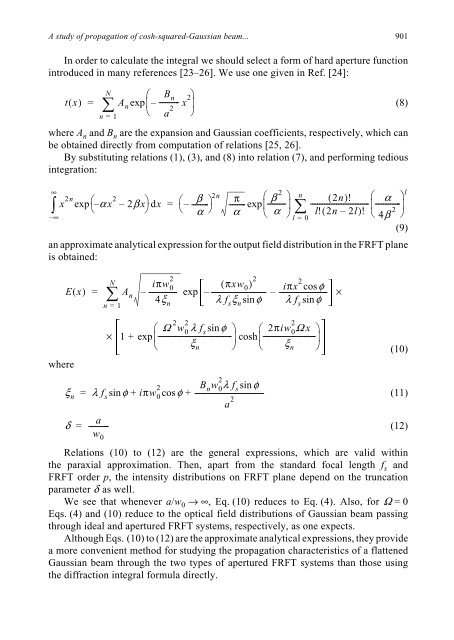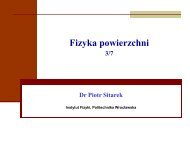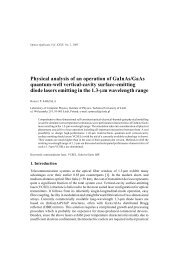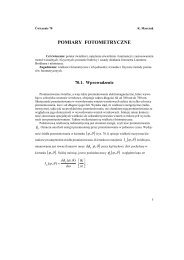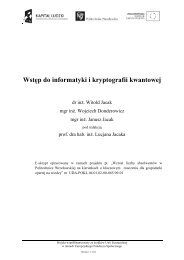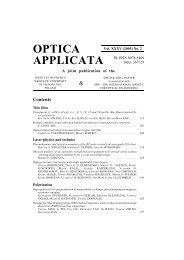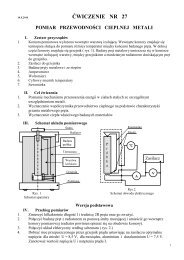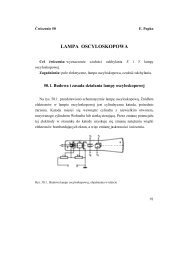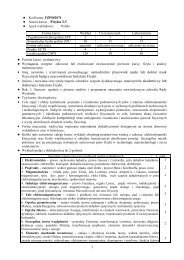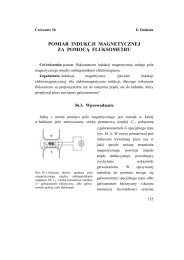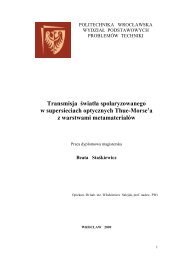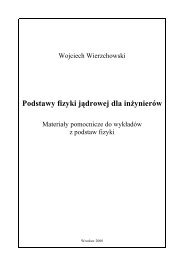A study of propagation of cosh-squared-Gaussian beam through ...
A study of propagation of cosh-squared-Gaussian beam through ...
A study of propagation of cosh-squared-Gaussian beam through ...
Create successful ePaper yourself
Turn your PDF publications into a flip-book with our unique Google optimized e-Paper software.
A <strong>study</strong> <strong>of</strong> <strong>propagation</strong> <strong>of</strong> <strong>cosh</strong>-<strong>squared</strong>-<strong>Gaussian</strong> <strong>beam</strong>... 901<br />
In order to calculate the integral we should select a form <strong>of</strong> hard aperture function<br />
introduced in many references [23–26]. We use one given in Ref. [24]:<br />
tx ( ) An (8)<br />
a<br />
where An and Bn are the expansion and <strong>Gaussian</strong> coefficients, respectively, which can<br />
be obtained directly from computation <strong>of</strong> relations [25, 26].<br />
By substituting relations (1), (3), and (8) into relation (7), and performing tedious<br />
integration:<br />
2<br />
----------- x 2<br />
N ⎛ ⎞<br />
= ∑ exp⎜–<br />
⎟<br />
n = 1 ⎝ ⎠<br />
x<br />
(9)<br />
an approximate analytical expression for the output field distribution in the FRFT plane<br />
is obtained:<br />
2n<br />
α x 2<br />
∞<br />
⎛– – 2βx⎞ ∫ exp<br />
dx<br />
⎝ ⎠<br />
– ∞<br />
⎛ β<br />
– --------- ⎞<br />
⎝ α ⎠<br />
2n π β-------α<br />
2<br />
⎛ ⎞ ( 2n)!<br />
α<br />
⎜---------- ⎟ ---------------------------------<br />
⎝ α ⎠ l! ( 2n– 2l)!<br />
4β 2<br />
⎛ ⎞<br />
⎜-------------- ⎟<br />
⎝ ⎠<br />
l<br />
=<br />
n<br />
exp ∑<br />
l = 0<br />
where<br />
Ex ( ) = An n = 1<br />
×<br />
N<br />
∑<br />
B n<br />
2<br />
iπw 0 ( πxw0) – ----------------<br />
4ξn 2<br />
iπx<br />
– ------------------------------λ<br />
fsξ n sinφ<br />
2<br />
cosφ<br />
exp<br />
– --------------------------λ<br />
fs sinφ<br />
Ω<br />
1<br />
2 2 2<br />
⎛ w0 λ fs sinφ<br />
⎞ ⎛ 2πiw0Ω x ⎞<br />
+ exp⎜------------------------------------------<br />
⎟<strong>cosh</strong>⎜------------------------------<br />
⎟<br />
⎝ ξn ⎠ ⎝ ξn ⎠<br />
2<br />
2 Bnw 0λ<br />
fs sinφ<br />
ξn λ fs sinφ iπw 0 cosφ<br />
a 2<br />
= + + ----------------------------------------<br />
a<br />
δ =<br />
----------w0<br />
Relations (10) to (12) are the general expressions, which are valid within<br />
the paraxial approximation. Then, apart from the standard focal length f s and<br />
FRFT order p, the intensity distributions on FRFT plane depend on the truncation<br />
parameter δ as well.<br />
We see that whenever a/w 0 →∞, Eq. (10) reduces to Eq. (4). Also, for Ω =0<br />
Eqs. (4) and (10) reduce to the optical field distributions <strong>of</strong> <strong>Gaussian</strong> <strong>beam</strong> passing<br />
<strong>through</strong> ideal and apertured FRFT systems, respectively, as one expects.<br />
Although Eqs. (10) to (12) are the approximate analytical expressions, they provide<br />
a more convenient method for <strong>study</strong>ing the <strong>propagation</strong> characteristics <strong>of</strong> a flattened<br />
<strong>Gaussian</strong> <strong>beam</strong> <strong>through</strong> the two types <strong>of</strong> apertured FRFT systems than those using<br />
the diffraction integral formula directly.<br />
×<br />
(10)<br />
(11)<br />
(12)


